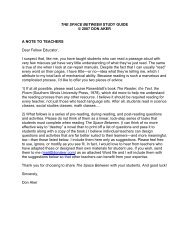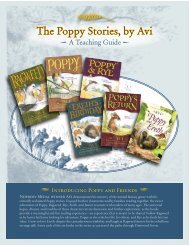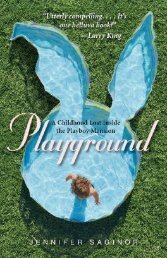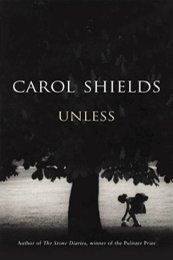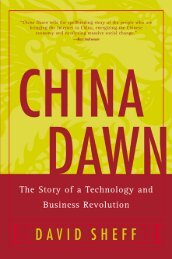Discussion Guide Ariel by Grace Tiffany
Discussion Guide Ariel by Grace Tiffany
Discussion Guide Ariel by Grace Tiffany
You also want an ePaper? Increase the reach of your titles
YUMPU automatically turns print PDFs into web optimized ePapers that Google loves.
4. Working in the different mediums of stage-play and novel, both Shakespeare and<br />
<strong>Tiffany</strong> try ceaselessly to convey the sense that this island is surrounded <strong>by</strong> water.<br />
How does Shakespeare make sure his audience never forgets that the sea surrounds<br />
the island? (This, <strong>by</strong> the way, is no mean feat when his actors stand on a bare, landlocked<br />
stage which lacks scenic backdrops and a modern sound system!) Does<br />
<strong>Tiffany</strong> successfully create and maintain a similar sense of vast water around the<br />
island, and, if so, how does she do so?<br />
5. As a question related to question 4, how does water come into our lives? What do<br />
watery things signify in terms of human experience? (Students are encouraged to<br />
think of rain, solid or melting ice, sailing, drinking, birth—when “water breaks”—<br />
swimming, baptism, dissolving, weeping.) How do those “watery” experiences figure<br />
in The Tempest and in <strong>Ariel</strong>?<br />
6. And, relative to questions 4 and 5, in The Tempest, when King Alonso asks Prospero,<br />
“When did you lose your daughter?” Prospero replies “In this last tempest.” However,<br />
we know that it is Alonso who has lost his son Ferdinand in “this last tempest”<br />
(5.1.152-153), 1 while Prospero has not lost his daughter at all in a physical sense.<br />
How does <strong>Tiffany</strong>’s description of Miranda’s first sight of Ferdinand on pp. 170-171,<br />
beginning “She was at sea,” comment on and attempt to interpret Prospero’s odd<br />
comment to Alonso in act five, scene one, of Shakespeare’s play?<br />
7. Compare Shakespeare’s Caliban to <strong>Tiffany</strong>’s Caliban. Are they entirely different, or<br />
does <strong>Tiffany</strong> truly appear to be basing her character on Shakespeare’s? Find at least<br />
one specific passage or interchange of dialogue in Shakespeare’s The Tempest that<br />
might support <strong>Tiffany</strong>’s interpretation of Caliban.<br />
8. Is <strong>Tiffany</strong>’s Miranda anything like Shakespeare’s? Again, find passages in<br />
Shakespeare that either justify or cast doubt on <strong>Tiffany</strong>’s version of Miranda.<br />
Do the same with any of the other characters <strong>Tiffany</strong> represents.<br />
9. In act five, scene one, of Shakespeare’s The Tempest, <strong>Ariel</strong> tells Prospero that his<br />
enemies Alonso and Antonio are now Prospero’s prisoners, and says, “[I]f you now<br />
beheld them, your affections/ Would become tender” (ll. 18-19). Prospero responds,<br />
“Hast thou, which art but air, a touch, a feeling/ Of their afflictions, and shall not<br />
myself,/ One of their kind, that relish all as sharply,/ . . . be kindlier moved than<br />
thou art?” (ll. 21-24). He concludes that he will forgive them. Compare Prospero’s<br />
and <strong>Ariel</strong>’s interchange to that described <strong>by</strong> <strong>Tiffany</strong> on pp. 181-183 and pp. 202-205<br />
of <strong>Tiffany</strong>’s novel. What is the difference between the influence Shakespeare’s <strong>Ariel</strong><br />
has on Shakespeare’s Prospero and the influence <strong>Tiffany</strong>’s <strong>Ariel</strong> has on <strong>Tiffany</strong>’s<br />
Prospero?<br />
10. What is Shakespeare’s <strong>Ariel</strong>? What is <strong>Tiffany</strong>’s <strong>Ariel</strong>? Do they represent different<br />
things? Or do they represent the same thing, and Shakespeare and <strong>Tiffany</strong> disagree<br />
about this thing’s worth?<br />
11. Does <strong>Tiffany</strong>’s final chapter—her epilogue—go way beyond any implications of<br />
European—New World encounter suggested in the original The Tempest? Or do the<br />
ideas proposed in this final chapter take their root from something in Shakespeare’s<br />
play?<br />
1 William Shakespeare, The Tempest, ed. Sylvan Barnet, NY: Signet, 1998.




